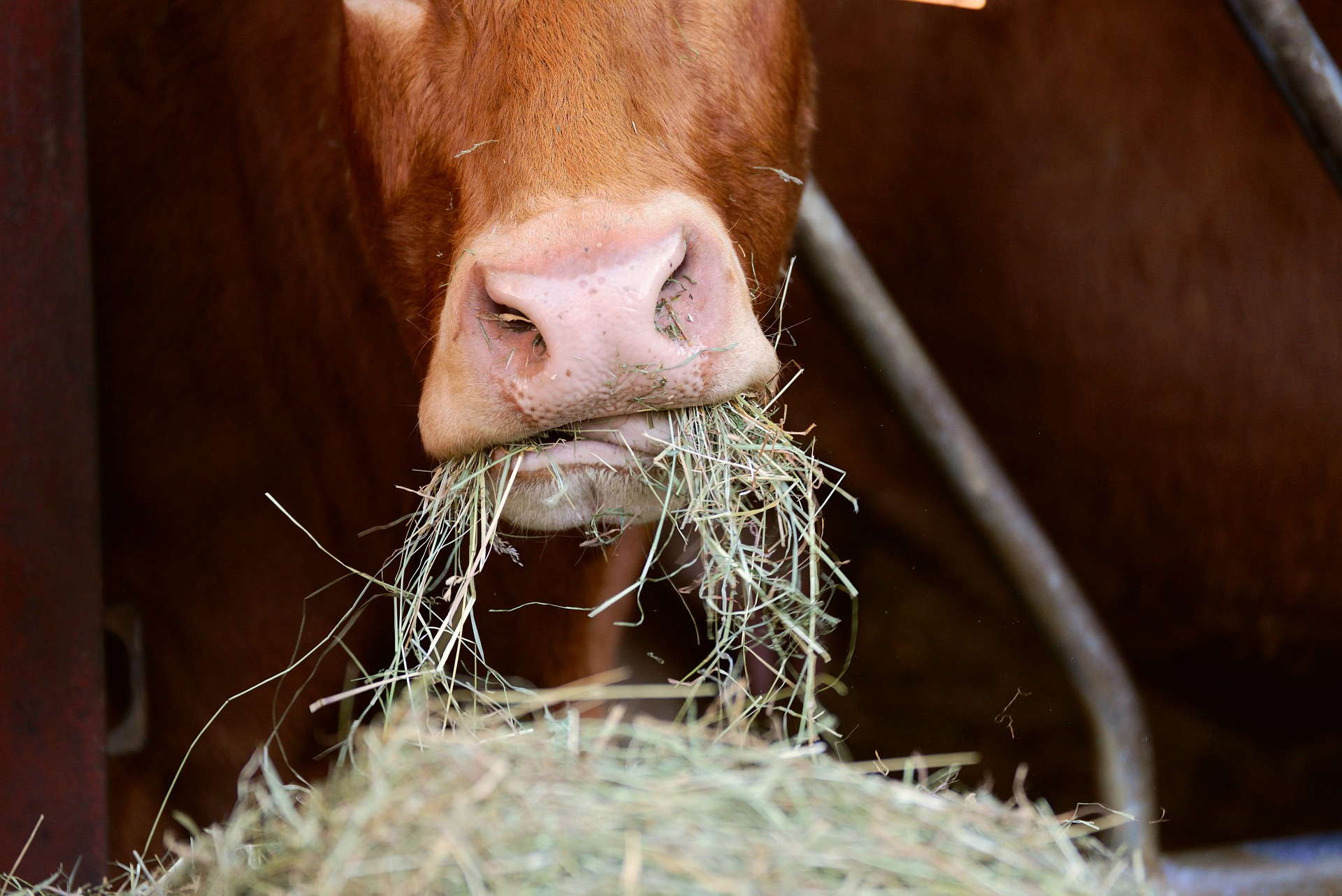Forage quality is nothing to take lightly in livestock nutrition. Good versus poor quality could mean the difference between healthy, productive animals and animals that are experiencing some form of malnutrition.
The kind of quality a producer will end up with depends on seven major factors: temperature, moisture, fertility, timing, harvest management, storage management, and anti-quality factors.
The first two affect the growth and maturity of forage plants. The last three are largely dependent on management.
Note that this is regardless of the type of forage being used for feed. No matter if it’s barley silage, oat-pea greenfeed, or alfalfa-grass hay, the nutrition of all these forage types is affected by each of these factors.
Contents
Temperature & Moisture
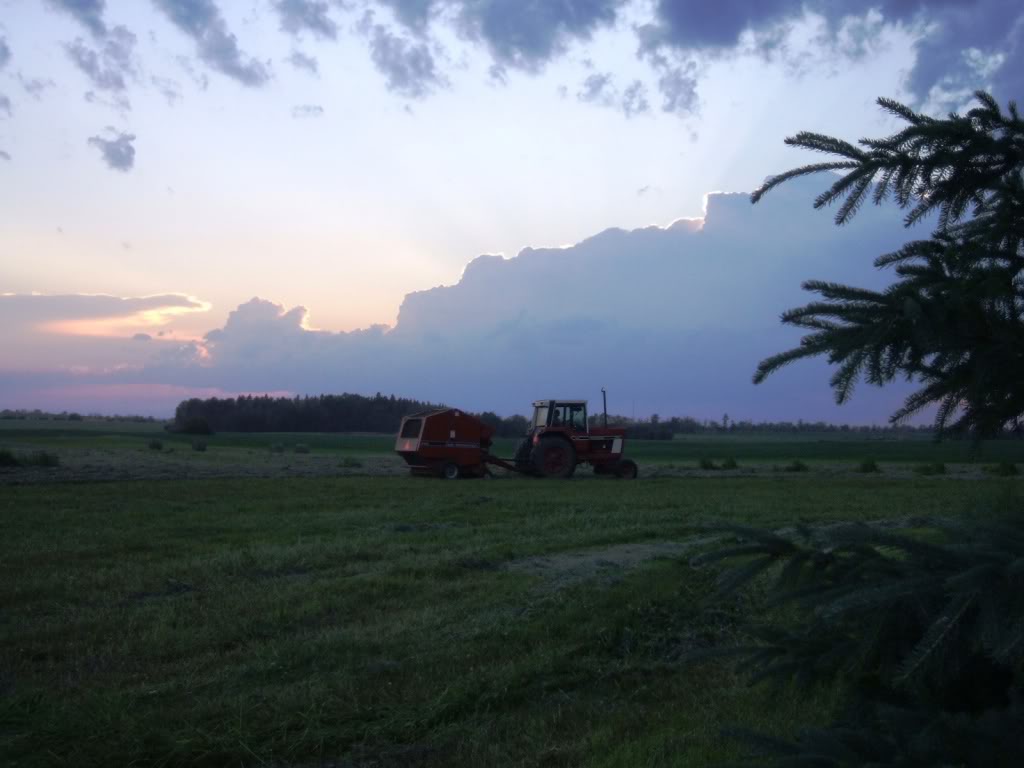
Heat and cold stress work in close conjunction with moisture to impact plant growth and reproduction. Neither temperature nor moisture is mutually exclusive from each other.
Cool-season (C3) forages are most affected by heat stress compounded by lack of moisture. Warm-season (C4) plants are most affected by cold stress, compounded by excess moisture.
While the inverse is also true, C3 plants are most likely to feel heat stress first before C4 plants do, and C4 plants feel cold stress before C3 plants do. To complicate matters, moisture conditions can either exacerbate or remediate any temperature-related impacts.
This is due to differences in temperature tolerances. Cool-season plants grow best at 15 to 20 degrees Celcius (or 70 to 90 Fahrenheit), and warm-season plants prefer 30 to 35 degrees Celcius (or 80 to 100 Fahrenheit). Moisture tolerances vary with species.
Heat stress forces water conservation in plants just so they can live. Growth slows. The longer the stress period, the more injury occurs. As a result, cell walls thicken increasing fibre content, reducing digestibility and decreasing energy and protein content.
In drought-stricken soils, normal and rapid water movement from roots to upper leaves and stems is hampered. Roots cannot grow or store much energy, and some root hairs die off. Until some moisture arrives, a negative feedback loop of more root loss means certain death for the plant.
Ironically, these stressed plants will put up a seed head early. This is an age-old survival strategy to make sure the next generation continues. However, seed viability is questionable given the parent plants’ stress levels hampering nutrient movement from roots to seeds.
Cold (or “chilling”) stress also reduces growth, moreso in C4 plants and legumes than in C3 plants. Chilling in plants reduces photosynthesis. Starch accumulates in leaf tissues, and digestibility increases as well as protein content. Plants produce more leaves than stems when chill-stressed and yield is often reduced.
Cold stress affects plants similarly to drought stress and yields similar forage quality. As mentioned, drought stress usually works in conjunction with heat stress.
Excessive moisture can increase yield, except in the context of flooding. A trade-off is lower feed quality, especially if forages are harvested at later maturity. Forages not flood-tolerant have reduced yields and low energy and protein content.
Fertility: Returning What was Taken
Removing forage for feed is considered an exportation of nutrients. Those nutrients must be returned to the land for continued long-term productivity.
Not uncommonly, hay stands almost never receive get fertilized. After five to 10 years, they become “worn out,” showing a reduction in yield and productivity. This might be due to a prevailing myth that the legumes in the stand will provide all the fertility a stand needs. This couldn’t be further from the truth. Legumes provide some nitrogen to surrounding grasses, however a constant removal of organic matter and fertility from the stand cannot be replenished by existing forages.
Nitrogen is usually the first limiting nutrient in most forage stands. Phosphorus is next in line. Grasses require nitrogen for growth and yield. Legumes require phosphorus over nitrogen.
Organic matter is often not considered a factor in forage fertility. However, it’s importance is in feeding soil microbes. Soil microbes help “free up” previously unavailable nutrients like phosphorus. Adding manure or incorporating grazing is worth considering to improve and maintain forage stand productivity.
Timing: Plant Stage at Harvest
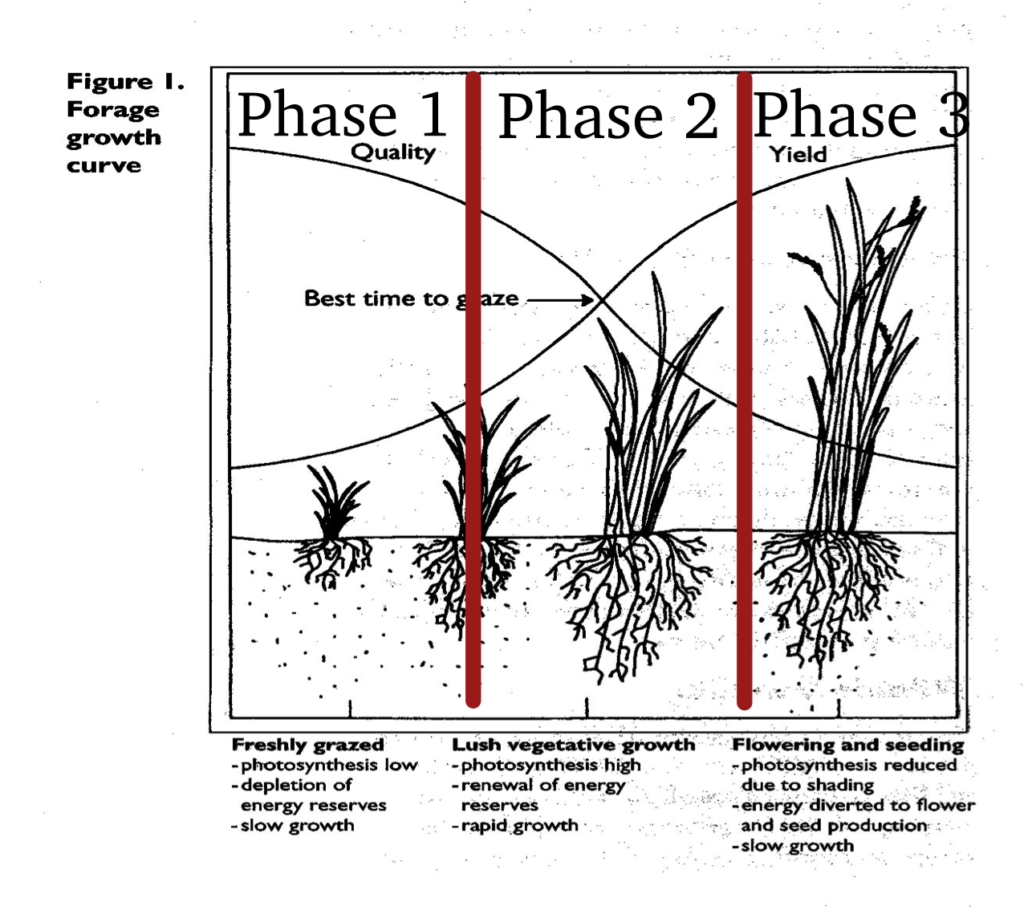
The more mature the forage stand is, the lower the nutritional value. A plant first puts its energy into growing leaves. When leaves have fully emerged, energy and nutrients are then translocated into the seedhead, ensuring viability for the next generation.
More nutrients are in the leaves than in either stems or seedheads. Animals deliberately select the leaves it’s the best part of the plant. Plants harvested while in late vegetative to early boot (seedhead emergence stage) are at the optimum quality for hay and silage.
Harvest Management: How Forage is Baled/Silaged
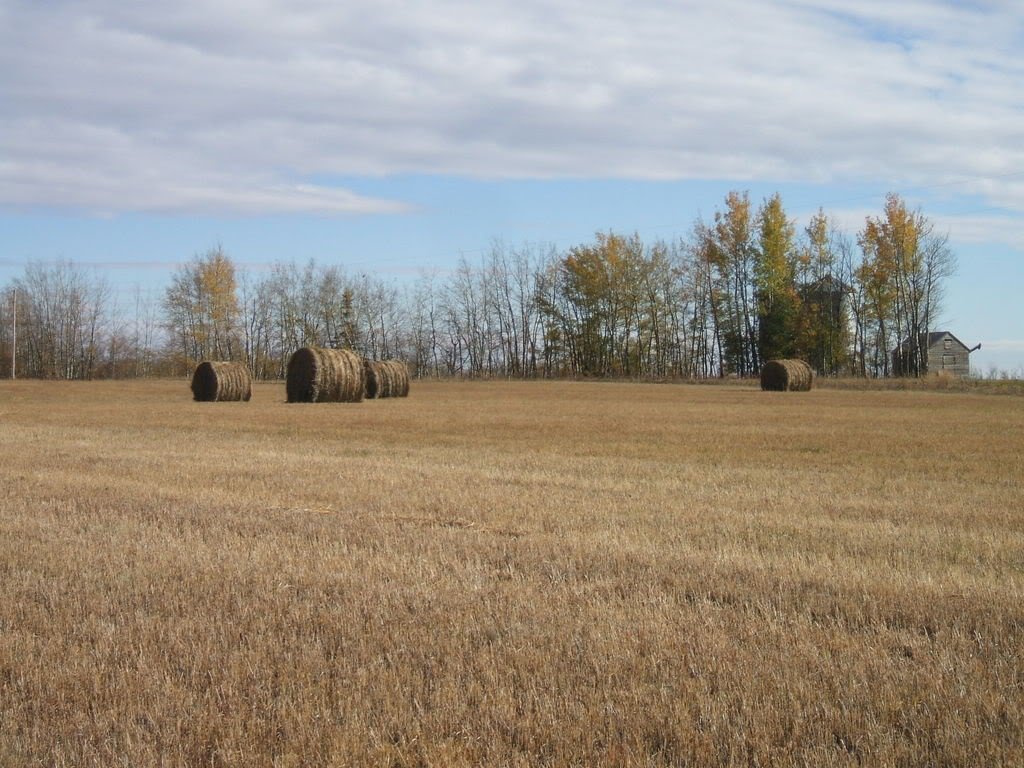
The moisture content at harvest affects feed quality. Hay that is baled in excess of 15 to 18 percent moisture (“high-moisture hay”) risks overheating leading to caramelization. The Malliard Reaction (caramelization) denatures proteins, reducing nutritive value and digestibility. Mouldy feed also eventually results.
Harvesting high-moisture hay is an issue when swaths get rained on. Rain is more of an issue on swaths that have been able to dry for a few days as opposed to those freshly cut. Plants are still respiring after being cut, and under normal drying conditions, dry out as water is “lost” to the atmosphere. Rained-on swaths “gain back” moisture they lost which encourages the leaching of nutrients and reduces feed value.
Moisture on dead or dying plant material feeds microbes and encourages decomposition. In nature, this is desirable and normal, as it reduces the amount of dead material accumulating on the soil surface. It’s not so great when trying to harvest feed for the winter, however.
A way to counter this is wrapping bales in plastic, with a catch. Swathed forage must be baled as possible in tightly packed smaller bales (two-thirds to three-quarters the normal size) within 48 hours after being cut. This gives sufficient time for plants to wilt down. Bales must be wrapped in less than 12 hours. Moisture content should be no more than 40 to 55 percent. Baleage, done properly, will have a pickled, sweet smell when opened at feeding.
Wrapping bales that have days-old rained-on feed will not reverse the nutritional loss that has already happened. Nor will it stop or slow caramelization and spoilage that has already started on the swaths. Spoilage issues will only be made worse.
Additionally, baling swaths that have sunk into the ground kick up dirt clods into the bale. This also creates mouldy feed issues.
Teddering or excessive raking swaths to fluff and dry them out creates losses in leaf material. Leaves contain more nutrients than stems. Loss of leaves means loss of forage quality. This is an issue in pure alfalfa or alfalfa-grass stands. Alfalfa leaves readily detach from the stems as the plant dries down. Clover (except sweet clover) generally doesn’t have this problem.
Harvesting chopped pit silage is similar to making baleage. Moisture content will be higher (optimum 55 to 65 percent), and plants need to be harvested in 12 to 24 hours after cutting. Harvesting at higher moisture creates leaching issues when feed is packed and stored at the pit or pile, which will decrease nutrient value as nutrients escape with water that escapes
Storage Management: How Feed is Stored
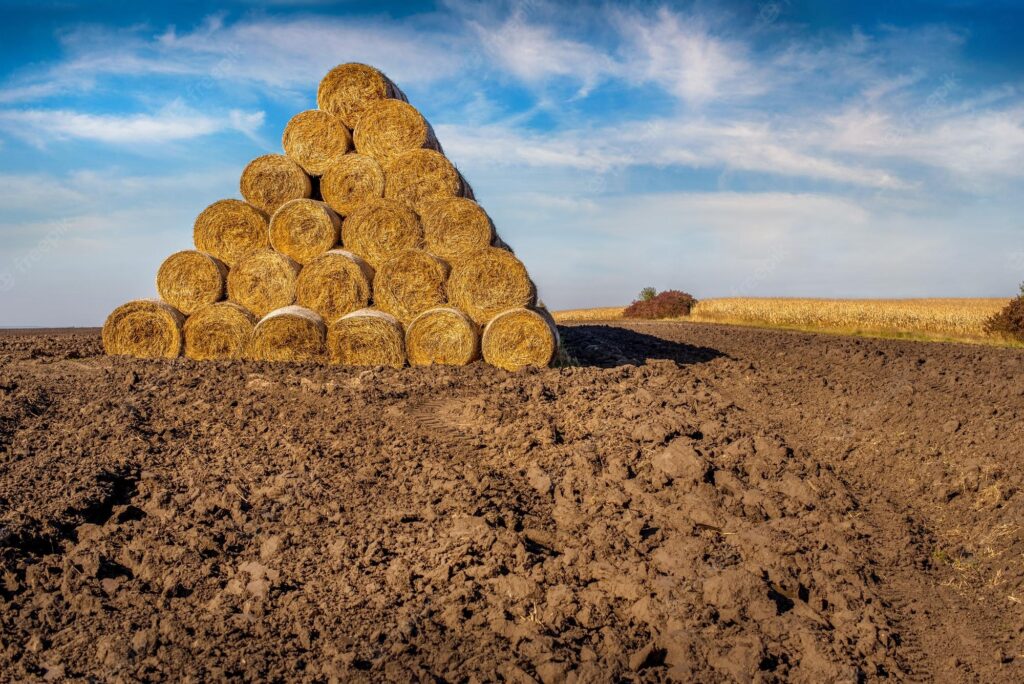
Hay bales must be left out on the field for a time after being made. They go through a sweat period where bales heat up and let off moisture. This lasts one or two weeks. Small square bales undergo the same sweat period as large round bales.
Gathering them up soon after harvest will cause spoilage and overheating. Spontaneous combustion is a risk. Once a bale fire begins, it’s almost impossible to stop, leading to a significant loss in winter feed inventory and revenue for the operation.
High-moisture hay carries a bigger risk than hay baled at the right moisture content. Baleage or silage bales carry almost no risk.
The method of stacking also impacts forage quality. Stacking in a pyramid formation, while reducing space, leads to spoilage issues. Bales do not have an opportunity to “breathe” or wick off moisture. Tarping may help somewhat, but ventilation for bales inside the stack is still problematic. Mushroom stacking is marginally better than the pyramid form.
Ideally, bales should be stacked in a single row, flat-face to flat-face several inches apart. Each row should be five to 10 feet apart and pointing in the direction of the prevailing wind. This allows wind to wick away moisture and get around each bale.
Regardless of the stack, most importantly they must be placed on a well-drained area, like on top of a hill. Any place where water will accumulate during a storm or at spring thaw speeds up spoilage.
Elevating large round bales off the ground also helps maintain forage quality. Contact with the ground and surrounding vegetation draw moisture into the bales, creating spoilage. Posts or pallets are good to use. Old tires may work as well if laid out in a mat formation
Ventilation is equally important for small square bales, for the same reasons already expressed. Most small squares are stored in a hay shed, barn, or outdoors under a tarp, elevated off the ground using pallets, tires or whatever helps air get under the bales as through and around.
Silage bales, on the other hand, can be stacked however a producer feels best, as long as they, too, are placed in a well-drained location.
Pit silage also must be stored in a well-drained location to minimize spoilage and allow for some level of drainage.
Packing and properly covering a silage pile is equally important. Forage needs to be put in an anaerobic environment as soon as possible. Packing removes as many oxygen pockets as possible, and covering using silage plastic ensures the surface also becomes ensiled.
Not covering or packing speeds spoilage, making feed turn into a slimy, black mess. Covering the pile with hay or straw bales instead of plastic does not protect the pile, nor ensure proper ensiling. The top several inches of the pile will spoil instead, reducing feed quality.
Anti-Quality Factors: The Final Say
Anti-quality factors are anti-nutritional compounds or combination of nutrients that cause animal health problems. Bloat, nitrates, tetany, ergot, fescue toxicity, sweet clover disease and prussic acid are some examples.
Most factors occur due to certain agronomic circumstances, such as added fertility, moisture and temperature. Others just show up out of the blue.
These factors have the “final say” regardless how good or poor quality a feed is. If the factor exists, that feed no longer carries the same weight in quality as it would without that factor.
Most factors can be managed in some way for the sake of animal health and nutrition. This usually means planning a means to mix or combine feeds to dilute the effects of the factor. Others, in worse cases, simply cannot be fed due to the outstanding ill effects on animal health. Ergot is one such example.
Conclusions
Understanding these factors may better help plan ways to get optimum to good quality feed for your animals. Some factors, unfortunately, are completely out of your control, such as hot summers, cold, cloudy days, and when the rain comes. Other factors are almost completely in your control: ensuring good fertility, the timing of when to cut for hay or silage, the way forage is harvested as hay or silage, and how the feed is stored. Anti-quality factors are the unexpected loose end that you may (or may not) be able to control. If you’re buying hay or silage, that might not be the case, as is discussed here.
Either way, all these factors are important for your animals’ health and well-being. How to tell if a feed is good quality is another article soon to come. Using sight and smell is an age-old way to tell if a feed is of decent quality. However, a feed test is always recommended, despite the cost involved and the time needed to wait for the results.
